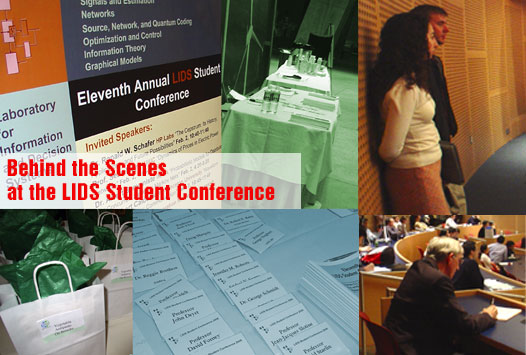What does it take to make a conference happen? Jun Sun and Lav Varshney, chairs of this year’s student volunteer committee, could tell you it’s no small task. The event bears its name not only because it features student work, but also because the students themselves are in charge. When LIDS director Prof. Vincent Chan opened the event on Thursday, he didn’t talk long (it was early, he said with a laugh) or go into detail about current research. Instead, he emphasized the real-world skills that organizing the event provides. It’s a tradition that reflects LIDS’ culture of collaboration and the coupling of hands-on experience with academic work.
The 2006 conference, like its predecessors, featured four keynote speakers, student presenters, a panel, and a banquet. Besides finding and booking speakers, which takes time and careful planning, a great many details come into play. A quick survey of the banquet room, for example, reveals a three-piece jazz band, slide show, dozens of tables, and a bustle of caterers. Look closer and you’ll see that guests have name tags, each table has a centerpiece, there’s a microphone in the far corner, and so on. The organizing committee, along with LIDS staff, makes sure these details are in place. Volunteers must also solicit presenters, orchestrate the schedule, and publicize the event, not to mention keep communication channels open between all involved.
The responsibility doesn’t come without stress, and this year had its share of minor, but momentarily harrowing, glitches. First the date was moved to reflect the extended IAP calendar, which caused some scrambling to notify speakers and offices. On top of this, Lav recounts, “the LIDS web server crashed right as we were trying to make the date change, so we had no method of communicating [it] besides email.” Luckily, LIDS’ Jason Decker stepped in, and the issue was resolved within a week. Later, unexpected rain delays from New York on Friday nearly detained the final speaker, Dr. Robert Kahn. He managed to make a last-minute flight change, however, and arrive at MIT in time for his talk. These bumps in the road keep the conference memorable, and add meaning to the idea of “real-world experience.” Lav and his fellow organizers hope that future volunteers will learn from their efforts, and agree the extra work “is worth it.”


